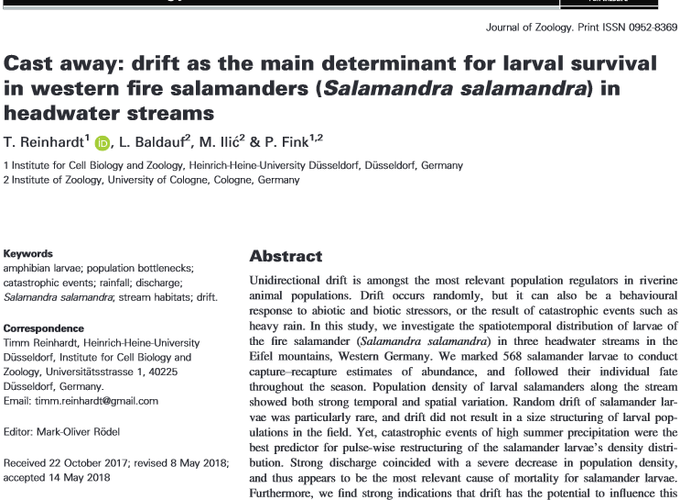Cast away - drift as the main determinant for larval survival in western fire salamanders (Salamandra salamandra) in headwater streams
Abstract
Unidirectional drift is amongst the most relevant population regulators in riverine animal populations. Drift occurs randomly, but it can also be a behavioural response to abiotic and biotic stressors, or the result of catastrophic events such as heavy rain. In this study, we investigate the spatiotemporal distribution of larvae of the fire salamander (Salamandra salamandra) in three headwater streams in the Eifel mountains, Western Germany. We marked 568 salamander larvae to conduct capture–recapture estimates of abundance, and followed their individual fate throughout the season. Population density of larval salamanders along the stream showed both strong temporal and spatial variation. Random drift of salamander larvae was particularly rare, and drift did not result in a size structuring of larval populations in the field. Yet, catastrophic events of high summer precipitation were the best predictor for pulse‐wise restructuring of the salamander larvae’s density distribution. Strong discharge coincided with a severe decrease in population density, and thus appears to be the most relevant cause of mortality for salamander larvae. Furthermore, we find strong indications that drift has the potential to influence this species’ evolutionary processes, as well as its ecological prevalence.
